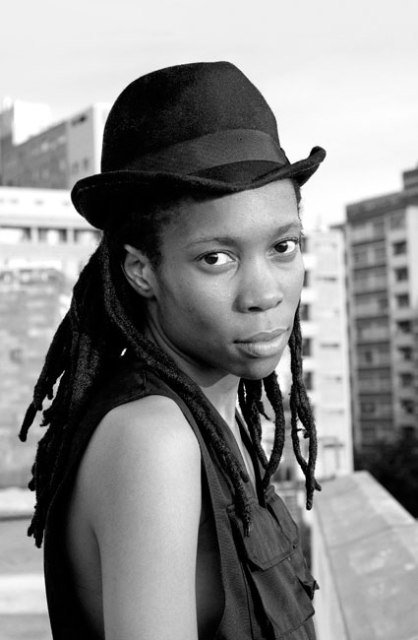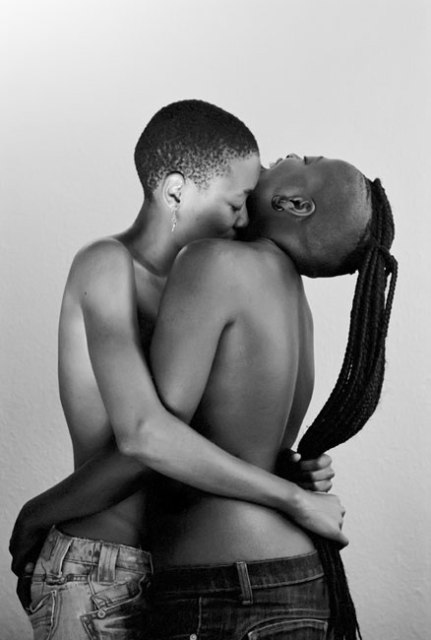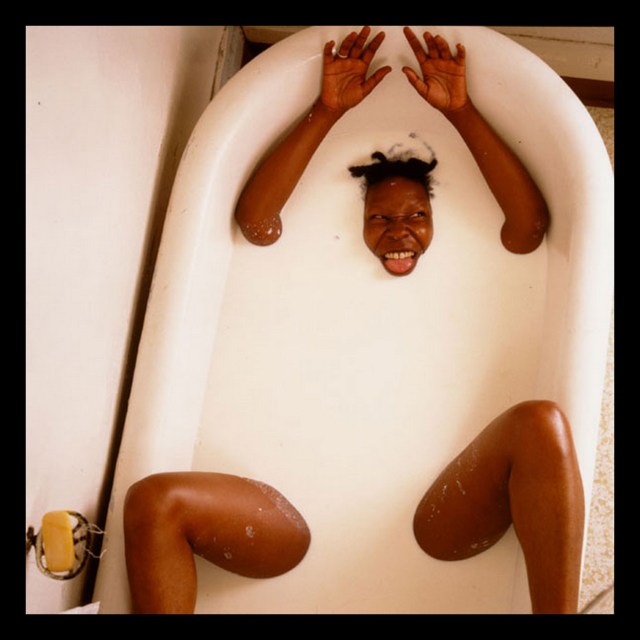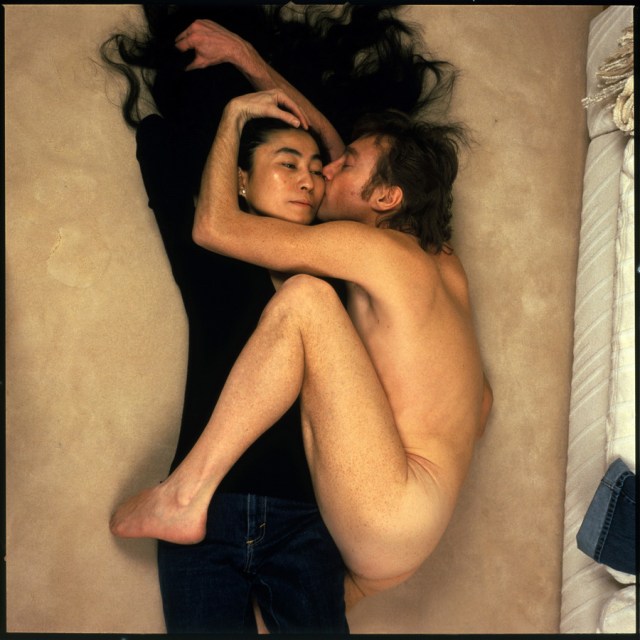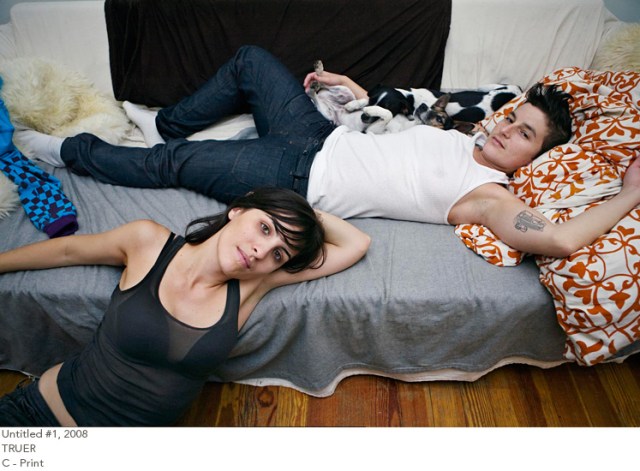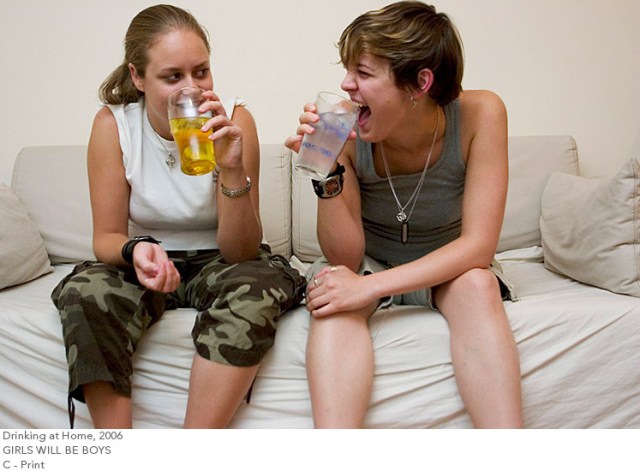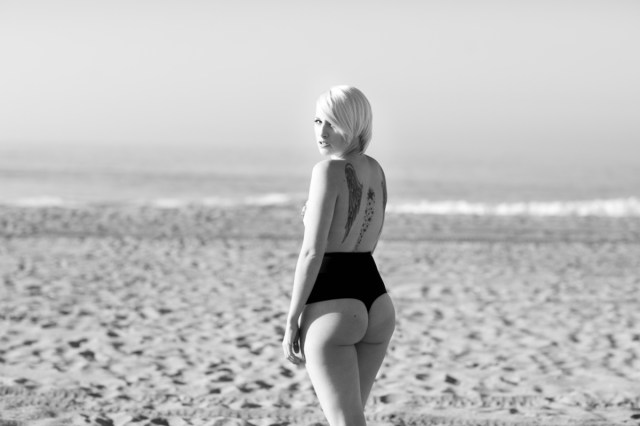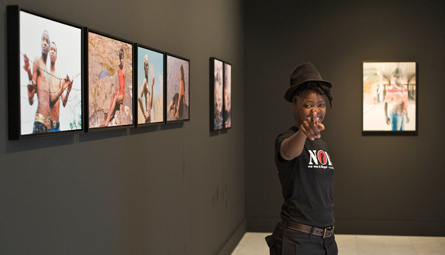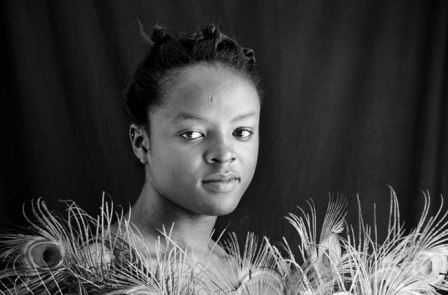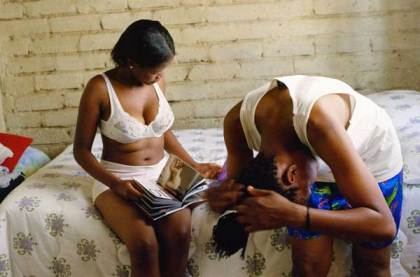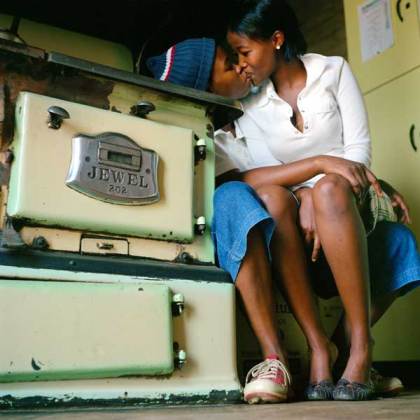Difficult Love: Watch Zanele Muholi’s Powerful Documentary on the South African LGBTQ Experience
We’ve talked about Zanele Muholi before. She’s a South African photographer and visual activist who uses her work to present her lived experience as a lesbian in South Africa. She uses photography, poetry, and video to record and express the violent complexity of being LGBTQI in South Africa. With few people willing to record and present queer black history in Africa, Muholi’s visual activism creates witnesses out of each of us.
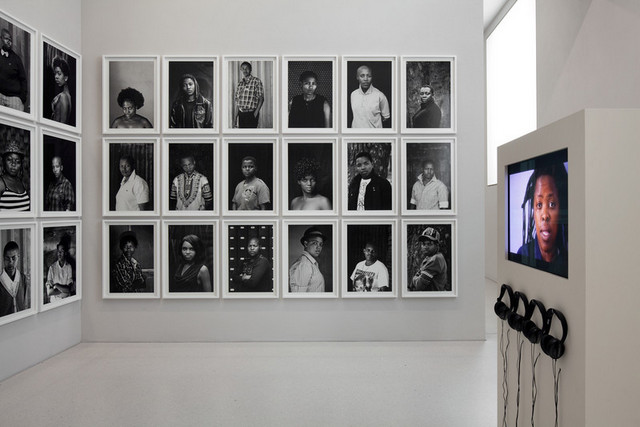
Credit Anders Sune Berg
Luckily, right now we can all enjoy some of Muholi’s work for free on IMDB. Her film Difficult Love is being streamed in full and for free. (Film trigger warning for discussion of rape and queerphobia.)
Directed by Muholi and Peter Golsmid, Difficult Love provides a glimpse into Muholi’s life and the lives, loves, and struggles of other black lesbians in South Africa. Muholi introduces us to a fraction of the stories and people that have moved her to create images that speak of something other than heterosexism, images that speak about us and the multitude of identities that a woman’s body can hold.
It is a powerful, at times difficult film to watch, but I’d recommend you watch the film soon, because Sistah Sinema and Elixher will be holding a live video chat about it with Muholi herself this Sunday, December 16th at 5pm PST/8pm EST. It’ll be broadcasting on YouTube, so keep an eye on Elixher’s Facebook page for the link to jump in. I know I’ll be doing a fair amount of Facebook watching that day.
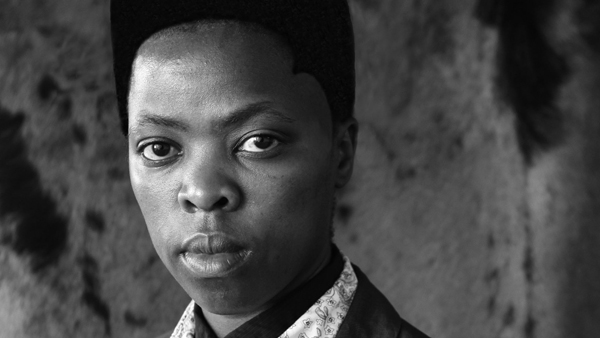
Zanele Muholi
Muholi is an inspiring figure that brings visibility to black queer identity in Africa in a manner that is self-aware and intentional in its rejection of the long imposed binaries resulting from colonialism. Check out more of her work and tune in on Sunday. Anyone who is interested in intersectionality, anti-colonialism, and just regular rattling of the cage of mainstream norms, this is for you.
Five Years of Zanele Muholi’s Photos of LGBT Lives in Africa Stolen From Her Apartment
During Artist Attack! month I wrote about the amazing South African photographer Zanele Muholi who uses her work as “visual activism.” On April 26th, Muholi arrived home to her apartment in Cape Town to learn that more than 20 hard drives with backup of her work from the years 2008-2012 had been stolen by a thief out her bathroom window on April 20th. According to her partner, Liesl Theron, the rest of her possessions were left untouched furthering the likelihood that this was a targeted attack.
The robbery has seen little press coverage, which has lead to further outrage as many believe the media blackout is due to the nature of Muholi’s work documenting queer South Africans and homosexuals in other African countries. Some of the only coverage I’ve seen of the story is by Melanie Nathan, a blogger and activist pictured at right with Muholi.
Muholi has created an IndieGoGo campaign in response:
I feel like a breathing zombie right now.
I don’t even know where to start. I’m wasted.
I’ve sent out a note to friends to tell them about the incident.
The person/s got access to the flat via the toilet window, broke the burglar guard and got away with my cameras, lenses, memory cards and external hard drives, laptop, cellphones…
Whoever ransacked the place got away with more than 20 external hard drives with the most valuable content I’ve ever produced
I am hoping that a few of my good friends are willing to go to pawn shops or to other places where this type of equipment is sold. I do not even want to know who the thief is.
I need the hard drives: ranging from toshiba, Western, Samsung at 320GB – 1TB each–these are the brands and sizes of hard drive I am looking for.
They would have gone into the pawn shop since 20 April. I am willing to pay a reward for the return of those ext. hard drives.
I certainly would pay more than the pawn shop can sell them for.
Thanking you in advance.
Nathan is asking anyone interested in establishing a reward fund for the returned goods to contact her (nathan@privatecourts.com) directly.
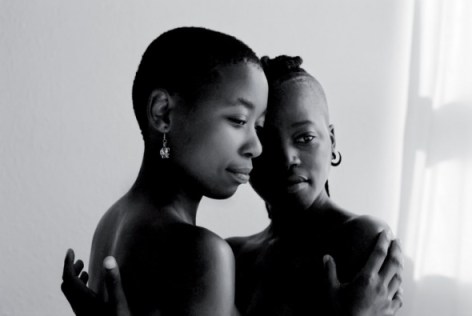
Zinzi and Tozama II Mowbray, Cape Town, 2010. Photo by: Zanele Muholi. Courtesy of Michael Stevenson Gallery.
The IndieGoGo campaign has raised about $3,000 so far to replace Muholi’s stolen equipment, but obviously the years worth of original photography and video footage documenting queer black history in places such as South Africa, Zimbabwe, and Uganda is irreplaceable. The stolen work included photos taken at the funerals of lesbians killed in hate crimes, as well as works in progress and work that Muholi had planned to exhibit in July. The show will now have to be canceled. The loss of these often unrepresented voices whom Muholi has worked so hard to document and share with the world is disturbing enough, but the fact that few mainstream media outlets have deemed the story unworthy of covering means that even the loss of these women’s stories is going without notice.
Will any of the larger arts, human rights or media organizations step forward to provide coverage of this story? If there is any chance of recovering her work, time is of the essence. Considering the plethora of media sound bites promoting gay rights as the new human rights frontier in America following Obama’s pronouncement last week in support of gay marriage, it would be heartening if Muholi’s story was considered worth telling.
Artists Attack! Ten Lesbian Photographers You Should Know (About)
0. 1/28/2012 – Art Attack Call for Submissions, by Riese
1. 2/1/2012 – Art Attack Gallery: 100 Queer Woman Artists In Your Face, by The Team
2. 2/3/2012 – Judy Chicago, by Lindsay
3. 2/7/2012 – Gran Fury, by Rachel
4. 2/7/2012 – Diane Arbus, by MJ
5. 2/8/2012 – Laurel Nakadate, by Lemon
6. 2/9/2012 – 10 Websites For Looking At Pictures All Day, by Riese
7. 2/10/2012 – LTTR, by Jessica G.
8. 2/13/2012 – Hide/Seek, by Danielle
9. 2/15/2012 – Spotlight: Simone Meltesen, by Laneia
10. 2/15/2012 – Ivana, by Crystal
11. 2/15/2012 – Gluck, by Jennifer Thompson
12. 2/16/2012 – Jean-Michel Basquiat, by Gabrielle
13. 2/20/2012 – Yoko Ono, by Carmen
14. 2/20/2012 – Zanele Muholi, by Jamie
15. 2/20/2012 – The Malaya Project, by Whitney
16. 2/21/2012 – Feminist Fan Tees, by Ani Iti
17. 2/22/2012 – 12 Great Movies About Art, by Riese
18. 2/22/2012 – Kara Walker, by Liz
19. 2/22/2012 – Dese’Rae L. Stage, by Laneia
20. 2/22/2012 – Maya Deren, by Celia David
21. 2/22/2012 – Spotlight: Bex Freund, by Rachel
22. 2/24/2012 – All the Cunning Stunts, by Krista Burton
23. 2/26/2012 – An Introductory Guide to Comics for Ladygays, by Ash
24. 2/27/2012 – Jenny Holzer, by Kolleen
25. 2/27/2012 – 10 Contemporary Lesbian Photographers You Should Know About, by Lemon/Carrie/Riese
![]()
[feature image by Sophia Wallace]
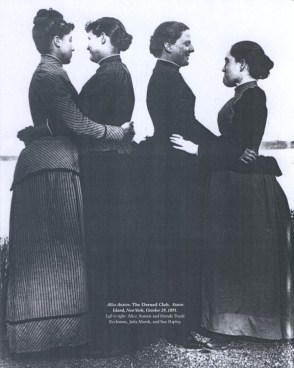
photo by Alice Austen
by Lemon & Carrie & Riese
Lesbians are perhaps more visible in the contemporary photography scene than any other aspect of popular visual art these days, but it’s been a long time coming — at the turn of the century, it was still nearly impossible for lesbian imagery to even see the light of day, let alone the cover of Vanity Fair.
The first well-recorded case of lesbian-produced photography is Emma Jean Gay, who was born in 1830 and taught herself photography in 1888. With the help of her ethnologist friend Alice Fletcher, who Emma had a big fat lesbian crush on, Emma moved out West and began photographing the Nez Perce. In the early-to-mid-20th century, gender bending and Sapphicly suggestive imagery would come from ladies like Alice Austen, Frances Benjamin Johnston and Margarethe Mather.
Many lesbian photographers we’re familiar with today rose to prominence in the 1970s and 80s — people like Cathy Cade, JEB (Joan E.Biren), Tea Corinne, Mumaz Karimjess, Chloe Atkins, Deborah Bright, Fiona Arnold, Jill Posener, Linda Kliewer, Jean Weisinger, Zone Paraiso Montoya and Hanh Thi Pham.
Today’s most well-known lesbian photographers are, hands down, Annie Leibovitz and Catherine Opie. The former is best-known for her editorial magazine work, and that’s true of many of the photographers we’ll discuss here today. Lately the commercial and the artistic seem to blur together more than ever, and a new generation of keen-eyed queers are making waves in the industry. Here are ten you should know about.
![]()
10 Contemporary Lesbian Photographers You Should Know (About)
[in no particular order]
+
1. Cass Bird
[website]
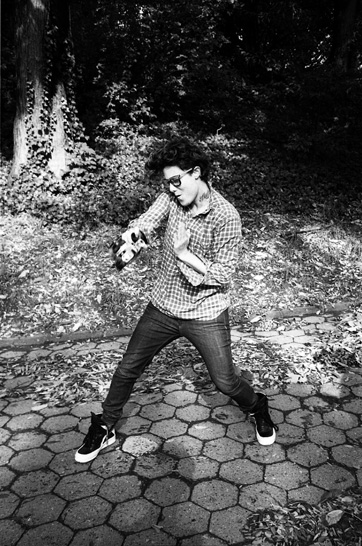
Cass Bird photographed by iO Tillett Wright
This one time, Cass Bird photographed Kate Moenning as if Kate Moennig was Patti Smith. It was a thing you’d actually wanted all your life but didn’t know about it until Cass Bird did it.
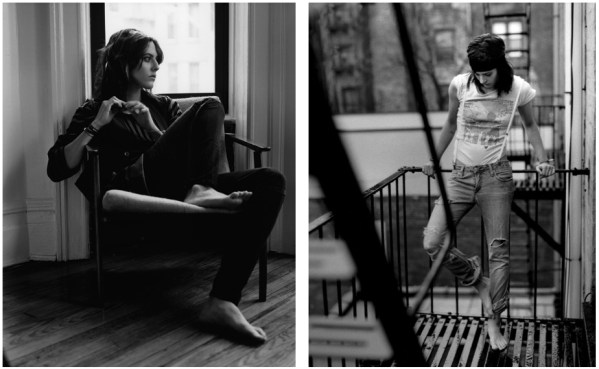
Kate Moennig by Cass Bird
Bird, a Smith graduate raised in Los Angeles and currently residing in Brooklyn with her wife and two kids, is a popular editorial, celebrity, commercial, fashion and documentary photographer whose work appears regularly in magazines like The New Yorker, Detailes, Dossier, Paper, Dazed & Confused, Fader, Rolling Stone and New York Magazine, as well as in campaigns/catalogs for brands like Urban Outfitters, Converse, Levi’s and Sony.
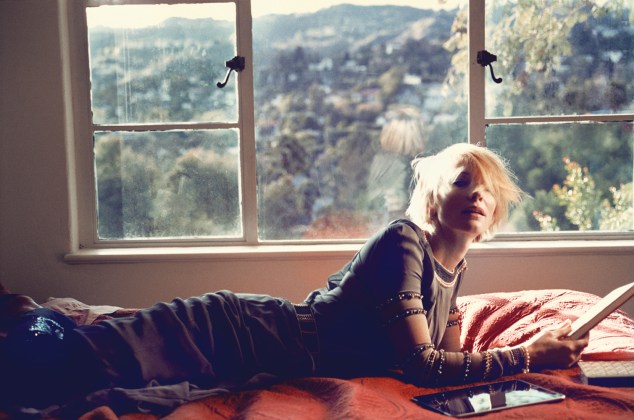
cate blanchett by cass bird
Bird’s show “JD’s Lesbian Utopia” (which documented her travels around the US with JD Samson of Le Tigre) was a hit at Deitch Projects (NY) and she’s exhibited all around the world in places like the Brooklyn Museum, The Art & Commerce Festival of Emerging Photographers Tour and One Institute. Her non-commercial work tends to focus on ideas around gender and sexuality.

Cass Bird via JD's Lesbian Calendar
Her subjects appear to be bursting with hope, love and generalized exuberance and a distinctly Californian sense of eternal youth.
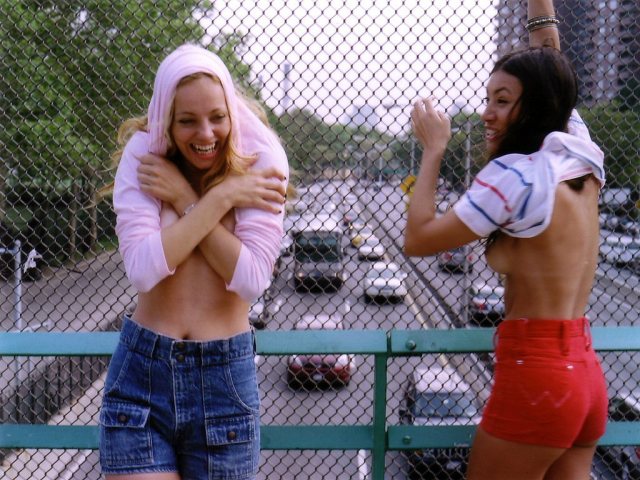
Bird’s book Rewilding features photos taken during the summers of 2009 and 2010, when Bird took a bunch of women noted for “their ease with their sexual identities, but also for their relative awkwardness in front of the lens” — friends, studio assistants, and women she’d found on the street — to Sassafrass, Tennessee to create a “joyous portrait of modern femininity and a frolicking celebration of women’s camaraderie.” The book comes out on February 29, 2012 and features an intro from Jack Halberstam, the author of Female Masculinity.
![]()
2. Zanele Muholi
[website]
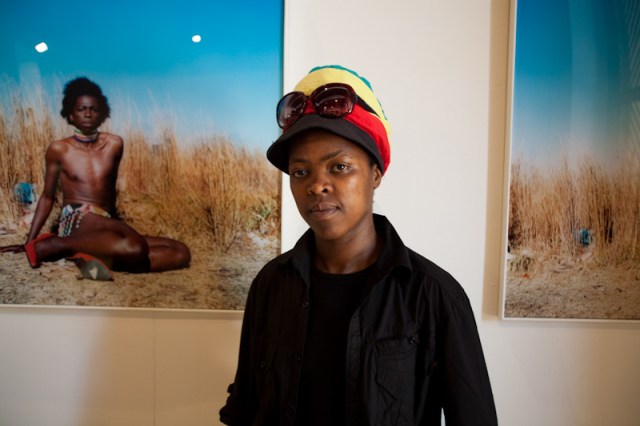
Zanele Muholi
This week, Jamie told us all about how Zanele Muholi uses “visual activism” to protest the violence and queerphobia that plagues South Africa. With her photography, Muholi chronicles the lives of black, queer and trans* South Africans who are sometimes rendered invisible or even “immoral.”
In her ongoing series Being, Muholi captures the tender and sweet expressions of love between lovers, friends, parents and children. But then there was this time when the Minister of Arts and Culture in South Africa, Lulu Xingwana, pronounced her exhibition “pornographic and immoral.” Muholi responded: “In art immorality cannot exist. Art is always sacred.”
Though she once said that she had hopes of trying out other professions — such as dancing or gynecology — Muholi found that she “reached a climax, a feeling of bliss” when she took photographs.
![]()
3. Annie Leibovitz
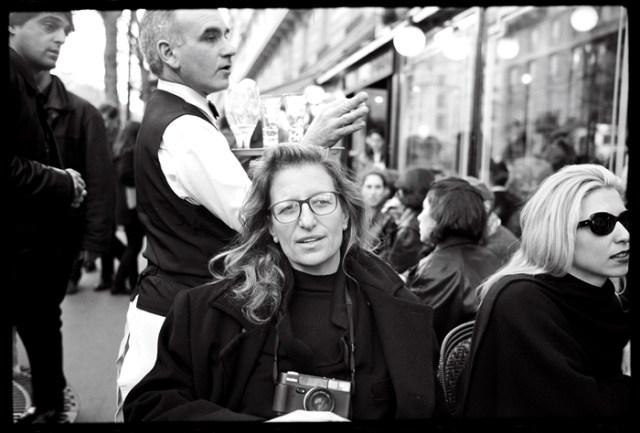
Annie Leibovitz
If you feel like you have heard of Annie Leibovitz it’s because you have. She’s one of the best-known American photograpers working today and her elaborate (and often incredibly expensive-to-produce) work appears regularly in major print publications including Rolling Stone, Vanity Fair and Vogue.
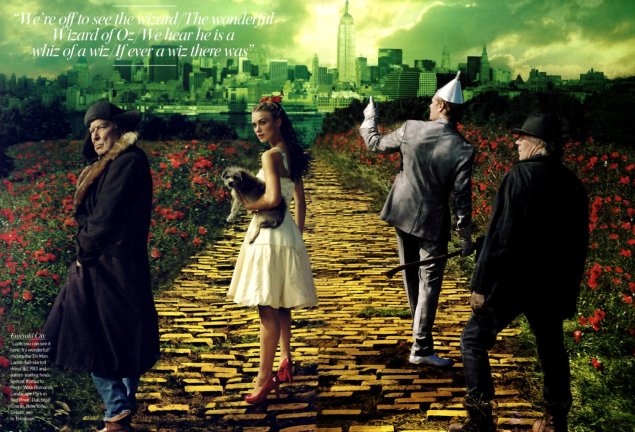
Keira Knightly for Vanity Fair
Perhaps you also know this photo of Ellen Degeneres holding her breasts. With 142 Rolling Stone covers and countless influential editorial spreads, her work is nothing short of iconic.
She mostly takes picture of famous people doing famous things, like the time when she photographed a naked John Lennon curled up next to a fully clothed Yoko Ono five hours before Lennon was shot and killed.
Leibovitz was romantically involved with Susan Sontag, an American essayist and activist. Her work has been ingrained in our national consciousness and are some of the most meaningful images of our time. The recent documentary Life Through A Lens gives a relatively intimate look at her life and work.
![]()
4. Sophia Wallace
[website]
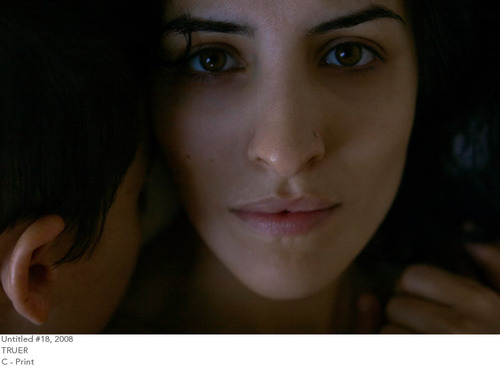
If you are a Tumblr Lesbian, it is possible that you have come across some of Sophia Wallace’s work on the Internet. Her photographs have popped up on popular queer blogs like Genderqueer. Plus, she has her own tumblr where she features her work and things that other people have said about her work. Wallace uses her photography to expose social constructions of race and gender and challenge normative perceptions. In her autobiographical project Truer, she attempts to topple heteronormative ideals of domesticity and desire as she documents her own home life.
Wallace is a graduate of Smith and NYU and lives in Brooklyn now, where she shot most of the photos for her series Girls Will Be Boys, a commentary on female masculinity.
Wallace’s work tries to subvert preconceived notions of how gender should look.
![]()
5. Robin Roemer
[website]
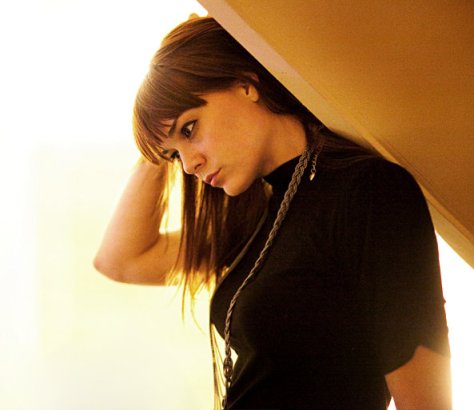
In addition to operating her own highly-revered wedding and lifestyle photography business, documentary & portrait photographer Robin Roemer has become a recognizable name in the queer community for her shots of female queer icons like Lady Gaga, Uh Huh Her, Tegan & Sara and Margaret Cho.

Robin has worked for clients including MTV Networks and Levi Strauss & Co and her work has appeared in places like InStyle, NYLON, O Magazine, Curve New York Magazine, Brides.com and Lady Gaga’s Deluxe Art Book.
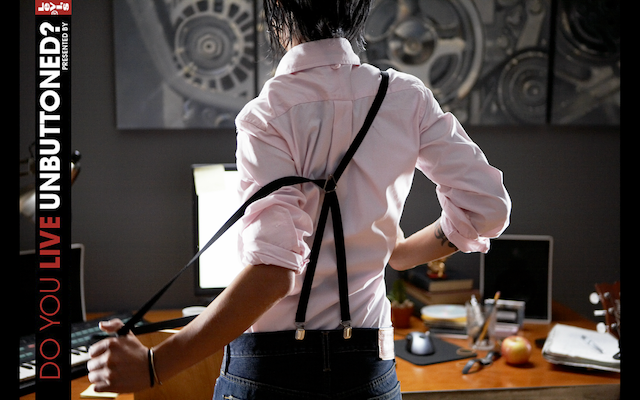
Robin Roemer is a familiar name around here — she’s Autostraddle’s photographer and therefore responsible for the Autostraddle Calendar Girls, a project that has gradually evolved with new angles every year and a consistently dynamic and captivating group of actual queer women.
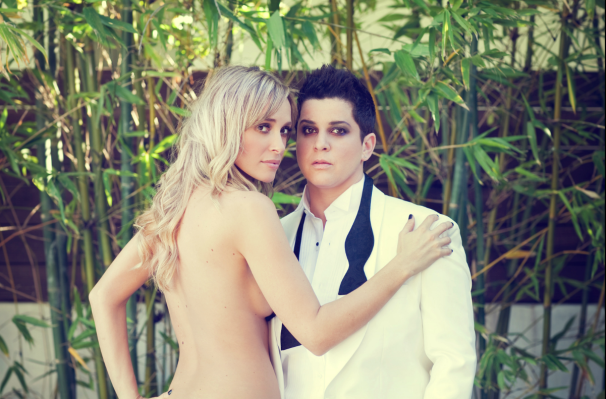
Julie & Brandy via Autostraddle 2012 Calendar Girls
Also for Autostraddle, Robin has captured events like the post-marriage-legalization celebration in New York City and The GLAAD Awards for Autostraddle as well as conducted photoshoots with celebrities like Kim Stolz, The Cliks, The Candy Slice Girls, Nicole Pacent & Julie Goldman.
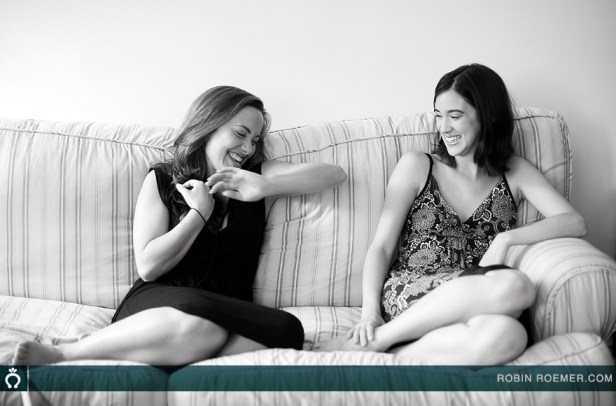
Perhaps the most distinctive element of Robin’s work is its reverence for and commitment to the absolute holiness of the photograph’s subject(s) — the world she captures is one of beauty, strength, and fun. But it’s earned beauty/strength/fun, and Robin’s imagery reveals these qualities to be just as complicated as the more readily-byzantine glances at sorrow or strangeness. She deals with issues of queer identity and female sexuality with an empowering vision that challenges the stereotypical idea of “what a lesbian looks like.”
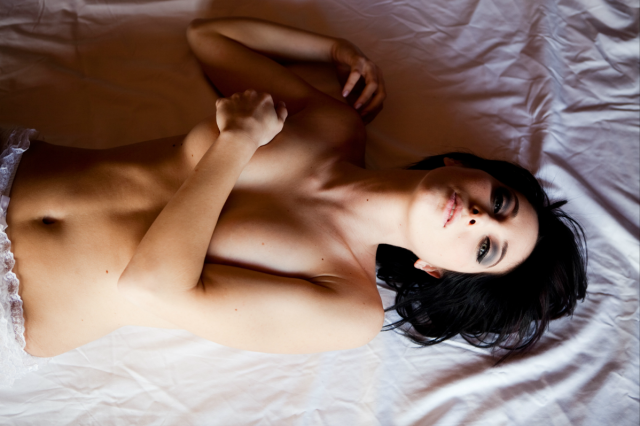
via robinroemer.com/portfolio/a-collection
![]()
Artist Attack! Zanele Muholi Boldly Archives the Difficult Love of South Africa’s Black Lesbian Community
0. 1/28/2012 – Art Attack Call for Submissions, by Riese
1. 2/1/2012 – Art Attack Gallery: 100 Queer Woman Artists In Your Face, by The Team
2. 2/3/2012 – Judy Chicago, by Lindsay
3. 2/7/2012 – Gran Fury, by Rachel
4. 2/7/2012 – Diane Arbus, by MJ
5. 2/8/2012 – Laurel Nakadate, by Lemon
6. 2/9/2012 – 10 Websites For Looking At Pictures All Day, by Riese
7. 2/10/2012 – LTTR, by Jessica G.
8. 2/13/2012 – Hide/Seek, by Danielle
9. 2/15/2012 – Spotlight: Simone Meltesen, by Laneia
10. 2/15/2012 – Ivana, by Crystal
11. 2/15/2012 – Gluck, by Jennifer Thompson
12. 2/16/2012 – Jean-Michel Basquiat, by Gabrielle
13. 2/20/2012 – Yoko Ono, by Carmen
14. 2/20/2012 – Zanele Muholi, by Jamie
![]()
I continue to bleed each time I read about rampant curative rapes in my ‘democratic’ South Africa.
I bleed every time queer bodies are violated and refused citizenship due to gender expression and sexual orientation within the African continent.
I constantly bleed when I hear about brutal murders of black lesbians in our townships and surrounding areas.
I’m scarred and scared as I don’t know whose body will be next to be buried.
I bleed because our human rights are ripped.
I cry and bleed as mothers, lovers, friends, relatives lose their beloved ones, let alone the children that become orphans because of trans/queerphobic violence.
We bleed, our life cycles invaded, we bleed against the will of our bodies and beings.
– Zanele Muholi
Horrific homophobia and “corrective rape” in South Africa is something we reported on when it made the news last year. Activist and artist Zanele Muholi uses “visual activism” – photography, poetry and even her own menstrual blood – to address the queerphobia and violence she has experienced as a South African lesbian.
In describing her process for the portraiture series Faces & Phases Zanele Muholi writes:
With Faces & Phases, I intended to show our emerging South African black lesbian aesthetics through portraiture, especially because positive images of us within the women‘s and queer archives are almost non-existent. Natasha Distiller argues that a vocabulary to represent lesbian desire and the pleasures of their fulfillment is provided by a linguistic and representational system which has no space to engage with the notion of the lesbian, except in relation to its own hetero/sexuality (Distiller 2005:45). I wanted to resist the heterosexual representation of lesbians through portraits.
See more of the photos from this series taken from 2006-2010. Of her 2007 series Being Muholi writes:
Being is an exploration of both our existence and our resistance as lesbians/women loving women, as black women living our intersecting identities in a country that claims equality for all within the LGBTI community, and beyond.
The work is aimed at erasing the very stigmatisation of our sexualities as ‘unAfrican’, even as our very existence disrupts dominant (hetero)sexualities, patriarchies and oppressions that were not of our own making. Since slavery and colonialism, images of us African women have been used to reproduce heterosexuality and white patriarchy, and these systems of power have so organised our everyday lives that it is difficult to visualise ourselves as we actually are in our respective communities. Moreover, the images we see rely on binaries that were long prescribed for us (hetero/homo, male/female, African/unAfrican). From birth on, we are taught to internalise their existences, sometimes forgetting that if bodies are connected, connecting, the sensuousness goes beyond simplistic understandings of gender and sexuality.
Through her use of menstrual blood in her show Isilumo siyaluma (Period Pains, 2006-2011) in Cape Town, Muholi sought to tell the story of black lesbians in South Africa and represent “curative rape.” (If you want some company in parsing how you feel about your menstrual blood and its place in art, Feministe can hold your hand.) She wrote of the project in a press release for the exhibit:
Isilumo siyaluma is a Zulu expression that can be loosely translated as “period pains/ periods pain”. Additionally, there is an added meaning in the translation that there is something secretive in and about this blood/“period in time.”
At one level, my project deals with my own menstrual blood, with that secretive, feminine time of the month that has been reduced within Western patriarchal culture as dirty.

On a deeper level then, my menstrual blood is used as a vehicle and medium to begin to express and bridge the pain and loss I feel as I hear and become witness to the pain of ‘curative rapes’ that many of the girls and women in my black lesbian community bleed from their vaginas and their minds.

Between March – May 2011, three (3) young black lesbians under the age of 25 were brutally murdered in various townships [….] As we continue to live and survive in troubled times as black lesbians in South Africa and within the continent, where rampant hate crimes and brutal killings of same gender loving women is rife, this ongoing project is an activist/artist’s radical response to that violence.
In the documentary Difficult Love, Muholi dicusses the necessity of sharing the family life of black South African lesbians and the need to mainstream the movement for queer rights:
Drawing on her experiences as a lesbian in South Africa, Muholi’s body of work speaks eloquently to the violence and attempts at erasure visited upon her community. In my mind, one of the most important and effective means of creating real change in any community is by inspiring people to personally recognize and respect the humanity of the “others” experiencing brutal violence. In this capacity, art can succeed where politics sometimes fail.


